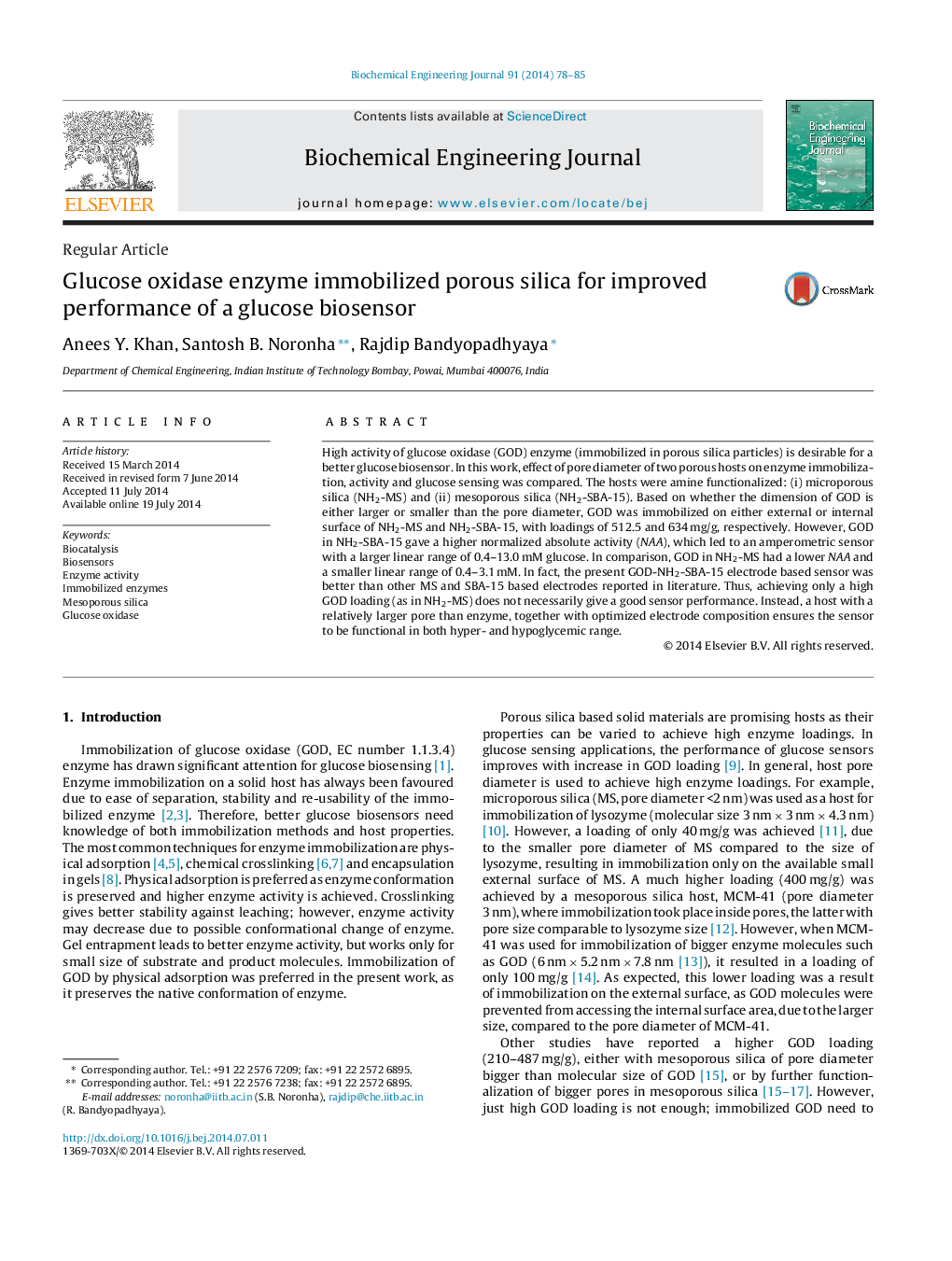| Article ID | Journal | Published Year | Pages | File Type |
|---|---|---|---|---|
| 3114 | Biochemical Engineering Journal | 2014 | 8 Pages |
•A high GOD loading and activity was achieved in NH2-SBA-15 than NH2-MS host.•Glucose sensor with GOD-NH2-SBA-15 results in larger linear range of 0.4–13.0 mM.•The GOD-NH2-SBA-15 sensor is suitable for diagnosis and monitoring of diabetes.•Pore diameter higher than GOD and optimized electrode composition gives good sensor.
High activity of glucose oxidase (GOD) enzyme (immobilized in porous silica particles) is desirable for a better glucose biosensor. In this work, effect of pore diameter of two porous hosts on enzyme immobilization, activity and glucose sensing was compared. The hosts were amine functionalized: (i) microporous silica (NH2-MS) and (ii) mesoporous silica (NH2-SBA-15). Based on whether the dimension of GOD is either larger or smaller than the pore diameter, GOD was immobilized on either external or internal surface of NH2-MS and NH2-SBA-15, with loadings of 512.5 and 634 mg/g, respectively. However, GOD in NH2-SBA-15 gave a higher normalized absolute activity (NAA), which led to an amperometric sensor with a larger linear range of 0.4–13.0 mM glucose. In comparison, GOD in NH2-MS had a lower NAA and a smaller linear range of 0.4–3.1 mM. In fact, the present GOD-NH2-SBA-15 electrode based sensor was better than other MS and SBA-15 based electrodes reported in literature. Thus, achieving only a high GOD loading (as in NH2-MS) does not necessarily give a good sensor performance. Instead, a host with a relatively larger pore than enzyme, together with optimized electrode composition ensures the sensor to be functional in both hyper- and hypoglycemic range.
Graphical abstractFigure optionsDownload full-size imageDownload as PowerPoint slide
